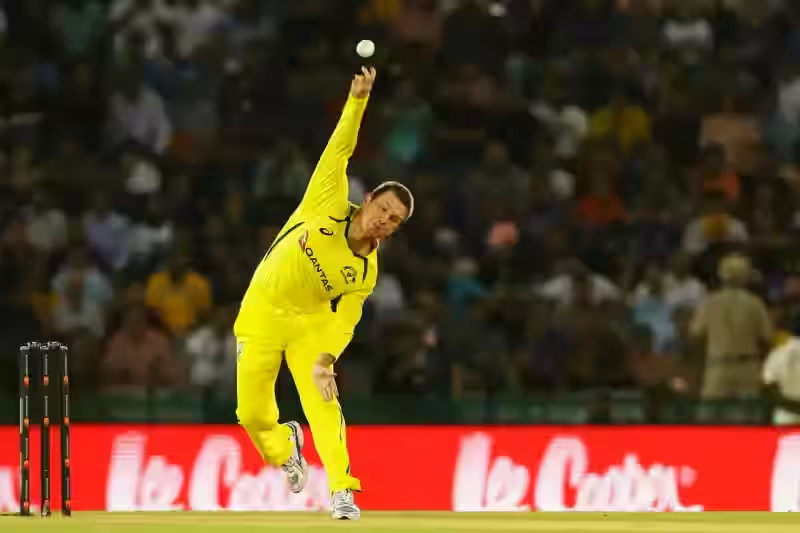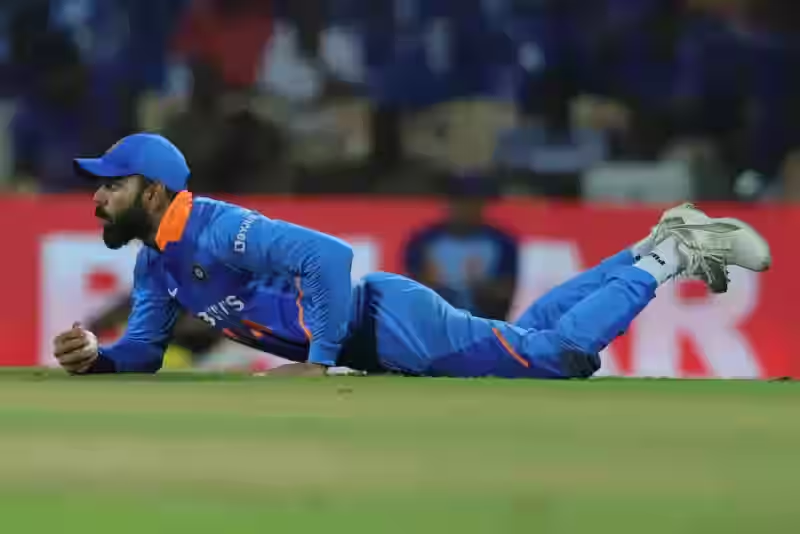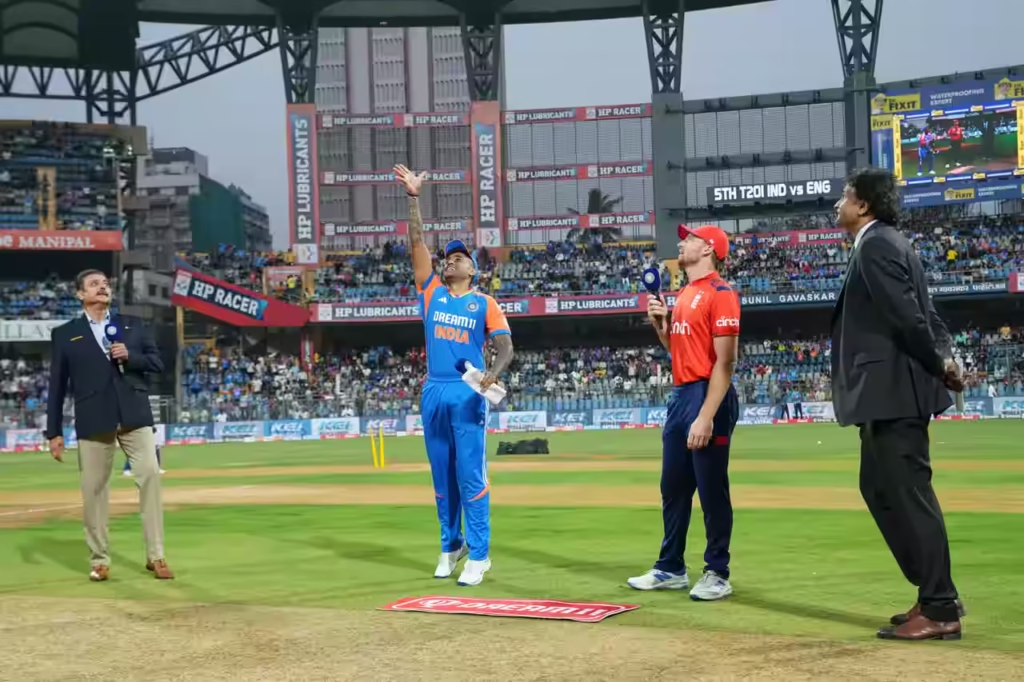Cricket fascinates over one billion fans worldwide. Many newcomers see it as just a game of batting. This centuries-old game that started in 16th century England packs more complexity and excitement than most people realize. The history of cricket spans several centuries, evolving into the diverse sport we know today.
Your first look at cricket might raise questions about what makes this bat-and-ball game special. Cricket’s rules go way beyond hitting balls. The game’s foundations are strategic field placements, different bowling techniques, and several ways to get out including bowled, caught, and run out. Players need both athletic prowess and mental sharpness. Bowlers send balls flying at 145 kilometers per hour while captains engage in tactical battles on the cricket pitch.
This piece explains why cricket isn’t just about batting. The sport has grown into a global phenomenon over centuries. You’ll learn about the simple structure of matches between two eleven-player teams. The game comes in three popular formats – Test matches, One Day Internationals, and the ever-changing Twenty20. Each format brings its own excitement to this complete sport, with cricket scoring explained for each.
What is Cricket Sport? A Quick Overview

Image Source: ZAP Cricket
Cricket matches are more than just players swinging bats at balls. The sport pits two teams of 11 players each against each other on a large oval field with a rectangular pitch at its center [1]. The simple goal is to score more runs than your opponent, but the game’s equipment, gameplay, and formats make it unique among sports. Understanding basic cricket rules is essential for newcomers to appreciate the game’s complexity.
Understanding the basics of cricket
The game follows a structured format where teams take turns batting and bowling/fielding [1]. Each team tries to score runs during their batting innings while the other team bowls and fields to stop them and get batters out [1].
Players compete on a large circular or oval grass field marked by a boundary [2]. The heart of the action takes place on the 22-yard (20-meter) pitch with a wicket at each end [1]. Three wooden stumps make up each wicket, with two smaller sticks called bails balanced on top [1]. The area around the wicket is known as the crease, which plays a crucial role in determining if a batter is out or not.
Teams have players with specific roles:
- Batters – Score runs by hitting the ball and running between wickets
- Bowlers – Get batters out and limit scoring through strategic deliveries
- Wicket-keeper – Special fielder who stands behind the wicket
- Fielders – Spread across the field to prevent runs and catch balls
Two umpires oversee the match and make decisions based on cricket rules and regulations. They get help from a third umpire who reviews close calls using video [3].
Teams score runs mainly by running between wickets. Batters get one run for each successful exchange [1]. Hitting the ball to the boundary scores four runs if it bounces first, or six runs if it crosses without touching the ground [1]. The bowling side can give away runs through penalties like wides and no-balls [2].
You’ll find three different types of cricket matches [4]:
- Test Cricket – A five-day battle with two innings per team that really tests skill, endurance, and technique [4]
- One-Day Internationals (ODIs) – Each team faces 50 overs in a single innings, usually lasting 7-8 hours [1]
- Twenty20 (T20) – Quick-fire matches with 20 overs per side that wrap up in 3-4 hours [1]
Why cricket is called a bat-and-ball game
Cricket belongs to the bat-and-ball family because batters use wooden bats to hit balls bowled at them [1]. This interaction between bat and ball creates all scoring chances and is the foundation of the game.
Cricket bats are special pieces of equipment made from English willow or Kashmir wood [2]. They feature a flat hitting surface and long handle. The ball has a cork core wrapped in string and leather with a raised seam [1]. This unique equipment setup creates a different dynamic from other similar sports.
Baseball players score by running around bases after hitting the ball. Cricket offers more ways to score – running between wickets, hitting boundaries, or getting runs from bowling mistakes [2]. These scoring options make cricket stand out from other bat-and-ball games.
The game’s two-sided nature makes it special too. Unlike sports where teams switch quickly between attack and defense, cricket teams spend long periods either batting or bowling/fielding [5]. This creates a unique rhythm and strategy.
Cricket’s dismissal system adds another layer of complexity. Batters can get out in several ways – bowled, caught, leg before wicket, stumped, or run out [3]. Stumping in cricket occurs when the wicket-keeper removes the bails while the batter is out of their crease.
The bat-and-ball label means more than just equipment in cricket. It represents the battle between bowler and batter that gives the sport its tactical depth. This contest creates excitement and drama that fans love across all cricket formats.
Cricket Sport Rules: More Than Just Batting and Bowling
Cricket’s excitement comes from a well-laid-out set of rules that control every part of the game. The game follows a clear path from the first coin toss to the final winning run. Players and fans find this mix of rules and play fascinating. For those new to the sport, understanding cricket rules for dummies can help appreciate the game’s intricacies.
How a cricket match is structured
A cricket experience starts with team captains tossing a coin. This simple act plays a huge role in strategy because the winner chooses to bat or bowl first [6]. Teams then take turns batting and fielding throughout the match’s innings.
Cricket offers three main formats at international level:
- Test Cricket – This five-day format needs teams to bat and field twice. People call it the ultimate test of skill and staying power. Test matches let teams play up to 90 overs each day [7].
- One-Day Internationals (ODIs) – Teams play one innings each with 50 overs, and games last 7-8 hours. These matches became popular in the 1980s. Teams need good technique, speed, and smart tactics [7].
- Twenty20 (T20) – The quickest format gives each team 20 overs. Games finish in about three hours. T20 has brought new fans to cricket since 2005. Power-hitting and creative skills make it exciting [7].
Whatever the format, cricket moves forward in “overs.” Each over has six legal balls bowled from one end of the pitch [6]. A new bowler must throw the next over from the other end. This back-and-forth continues through the innings [6].
The word “over” comes from umpires shouting “Over!” after six legal balls [6]. Fielders switch ends between overs. Batters stay put but change who faces the next ball [6].
Longer games have set breaks for lunch and tea, plus quick drink breaks [8]. These breaks help players rest during long matches.
Key rules every beginner should know
Cricket rules go way beyond batting and bowling. The main goal stays simple: get more runs than the other team [3]. Getting there means following many rules.
Teams score runs these ways:
- Running between wickets (one run for each complete run)
- Boundary shots (four runs if the ball bounces before crossing; six runs if it crosses without touching ground)
- Extra runs from illegal balls like no-balls and wides [3]
Bowlers can get batters out through:
- Bowled – Ball hits the wickets
- Caught – Fielder catches the ball before it touches ground
- Leg Before Wicket (LBW) – Ball would hit wicket if leg wasn’t there
- Stumped – Wicket-keeper removes bails while batter’s out of ground
- Run Out – Fielders hit wicket with ball before batter finishes running [3]
Field positions have strict rules, especially in limited-overs cricket power plays. Since 2015, power play rules say only two fielders can stay outside the 30-yard circle in the first 10 overs. Four fielders can move out between overs 11-40, and five can field deep in the last 10 overs [3].
Longer formats have special rules to keep things fair. The “follow-on” rule lets teams make opponents bat again if they lead by 200+ runs after first innings [8]. Team captains can also declare their innings over to try winning [3].
Bowling in cricket has its own rules. Bowlers get called for no-balls when they step over the line or bowl illegally. The batting team gets an extra run [3]. Wide balls that batters can’t reach also give an extra run [3].
Dead Ball happens when a delivery bounces twice before reaching the batter [3]. “Byes” and “Leg Byes” let teams score when the ball misses the bat or hits the batter’s body [3].
Umpires arbitrate everything. They watch each ball, decide on dismissals, and keep the game fair [8]. A third umpire helps review tough decisions with technology [3].
These rules create perfect balance between attacking batting and defensive fielding. Cricket’s appeal comes from mixing athletic skill with smart thinking. That’s why millions of fans love this sport worldwide.
Bowling: The Art of Outsmarting the Batter

Cricket bowling is the tactical heart of the game that needs physical skill and mental sharpness to outsmart batters. Most casual fans might focus on batting heroics, but seasoned cricket enthusiasts know bowlers shape match outcomes through strategy, variation, and precision. This makes understanding bowling techniques vital to appreciate cricket’s depth.
Types of bowlers: fast, swing, spin
Cricket bowling splits into two main categories: pace (fast) and spin. Each offers unique ways to dismiss batters [1].
Pace bowlers use speed as their main weapon to challenge batters. Their average bowling velocity puts them in these categories:
- Fast bowlers – Exceeding 142 km/h, raw speed intimidates batters [5]
- Fast-medium bowlers – Between 130-141 km/h, mix pace with control [5]
- Medium-fast bowlers – Between 120-129 km/h, excel in accuracy [5]
Swing bowlers are specialists who make the ball curve through the air. They maintain the ball strategically by polishing one side while letting the other roughen [1]. The ball moves toward its rougher side in conventional swing, which works best with newer balls in humid conditions [1]. The ball can achieve reverse swing after 35-40 overs, where it moves toward the shiny side instead [9].
Spin bowling trades speed for turning ability and flight variation. These bowlers rotate the ball to create deceptive movement after it bounces. Two main spin techniques stand out:
Finger spin (off-spin): Bowlers create rotation with their fingers, making the ball turn from left to right for right-arm bowlers [10].
Wrist spin (leg-spin): Bowlers use wrist flicks to rotate the ball, usually turning it from right to left for right-arm bowlers [10].
Each style has special variations to confuse batters. Fast bowlers might bowl bouncers that target the upper body, yorkers aimed at feet, or slower balls with disguised action [9]. Spin bowlers can deliver doosras that turn opposite to their standard delivery or arm balls that go straight instead of spinning [10].
How bowlers control the game
Australian bowler Glenn McGrath put it best: “The bowlers control the game. The batsmen may say that they do, but they stand there and they can’t do anything till the bowler runs in and bowls” [2].
Mastering fundamentals starts with length control – knowing how to pitch the ball consistently in spots that test batters’ technique [11]. Directional accuracy comes next, placing deliveries that limit scoring options [11]. These skills help bowlers build pressure through dot balls where batters can’t score.
Field placement is vital to bowling success. Different styles need specific field arrangements to maximize dismissal chances. To cite an instance, fast bowlers who curve the ball well often place multiple close catchers near the batter. Spin bowlers spread their fielders to catch mishit shots [12].
Bowlers stay in control by mixing up their deliveries. Changes in pace, line, length, and movement keep batters from finding their rhythm. Limited-overs formats see bowling captains coordinate strategies like short spells of 2-5 overs that make batters adjust constantly [13].
Match situations shape bowling approaches. Test matches see bowlers hunt for wickets with attacking strategies. Shorter formats balance wicket-taking with run prevention [14]. Smart bowlers adapt to changing pitch conditions, ball wear, and exploit batter weaknesses as matches progress [15].
Bowling is cricket’s strategic foundation – a complex chess match where bowlers must outsmart, outplan, and outlast batting opponents through skill and mental warfare.
Fielding: The Unsung Heroes of Cricket

Image Source: ZAP Cricket
Cricket’s silent architects of victory work in the shadow of big-hitting batters and skilled bowlers. Cricket fielding, the “unsung hero” of the game, can change matches within seconds through spectacular catches, lightning-fast run-outs, and vital boundary saves. Yes, it is worth remembering the famous quote from M.S. Dhoni, The Untold Story: “A good bowler will take wickets, a good batsman may score runs in some matches but not others, but a good fielder will save runs in every match” [4].
Fielding positions and their importance
The strategic placement of 11 players creates a complex defensive web that limits scoring opportunities on a cricket field. One bowler, one wicket-keeper, and nine fielders take their positions based on several key factors [4]:
- Pitch conditions and ball age
- Bowling style (pace vs. spin)
- Match format and phase of play
- Boundary dimensions and batter tendencies [4]
The wicket-keeper needs exceptional reflexes and concentration while standing directly behind the stumps. The slip fielders position themselves behind the batter on the off-side to catch edges, and they must have extraordinary reaction times as balls come at high speeds [4]. Research shows infielders drop fewer catches than outfielders [16], which proves how specialized each position has become.
Players divide their fielding positions into three strategic zones:
- Close infield – Positions near the batter focused on catching quick edges
- Infield – Within the 30-yard circle, primarily preventing singles
- Outfield – Boundary positions aimed at stopping fours and sixes [17]
The 2017 Big Bash League analysis showed a direct link between fielding quality and league position, which proved that “catches win matches” [18]. Research indicates outfielders positioned in front of square drop more catches [16], and this affects strategic field placements.
How great fielding changes matches
Teams can change cricket matches through three key ways: saving runs, creating pressure, and making game-changing dismissals. Modern teams save an average of 8-10 runs per inning through effective boundary fielding [7]. These saved runs often decide the outcome of close matches.
Numbers tell the story of fielding’s impact. Test cricket’s catch conversion rates have jumped from 70% in the 1990s to about 82% in the 2010s [7]. Research also shows teams get fewer run-out chances during powerplay overs when more fielders stay in the inner circle [16]. This shows how fielding restrictions affect dismissal opportunities.
Great fielding affects players mentally too. A diving stop or brilliant catch lifts the entire team’s spirit while deflating the opposition. Cricket analysts point out that “fielding has gained significant importance as saving runs is vital to winning matches, especially when you have shorter formats” [16].
Players like Kieron Pollard and Glenn Maxwell have brought new techniques to modern cricket, like the boundary save – where they flick the ball back into play before crossing the boundary rope [7]. These innovations have altered the map of what fielders can achieve, turning potential sixes into chances for dismissals.
Great fielding combines athletic skill with tactical smarts – the perfect mix that turns good teams into champions.
Teamwork and Strategy: The Real Backbone of Cricket
Cricket success depends on more than just batting, bowling, and fielding skills. The sport needs a strategic framework that shapes its core. Cricket teams work like chess masters on a grassy battlefield. Their coordinated planning and decisive leadership often determine match outcomes before the first ball.
Role of captains and team planning
Cricket captains have responsibilities that are way beyond the reach and influence of leaders in most team sports. Unlike football or basketball where coaches control the game, cricket captains make vital on-field decisions. These include team selection, batting order, and when each bowler will deliver [6]. Leaders need deep game knowledge and must understand player capabilities. They should adapt quickly to changing match situations.
Smart captains know how to maximize their team’s strengths through strategic planning. They serve as:
- On-field tacticians – they change bowlers and adjust fields
- Team motivators – they inspire players through example and leadership
- Communication bridges – they connect coaching staff with players [8]
Captains mentor younger players and provide support and guidance. They set standards of behavior and performance [8]. Research shows that successful cricket leaders help teammates develop physical and mental abilities to improve team performance [8].
How field placements and bowling changes win games
Field placement is cricket’s core strategic element. The simple principle involves positioning fielders where the ball will likely travel [19]. Six core fielding positions provide defensive coverage. The remaining three “spare” fielders create endless strategic options.
Bold captains use attacking field settings to take wickets instead of just preventing runs [19]. They build bowler confidence through aggressive field placements. This creates psychological pressure on batters. On top of that, it blocks a batter’s favorite shots and often forces technical mistakes that lead to dismissals [19].
Bowling changes are another tactical weapon. Research shows batting teams with five or more wickets score substantially more runs in final overs (death phase) [20]. The bowling strategy wants to take early wickets. This forces less-skilled tail-end batters to face the bowling attack during vital late innings [20].
Cricket’s strategic depth goes beyond individual skills. Teams turn individual talents into championship-winning performances through coordinated teamwork, smart leadership, and tactical knowledge.
Different Formats, Different Skills: Test, ODI, and T20
Cricket’s amazing variety of formats creates distinct games within the same sport. Players must adapt their skills, strategies, and mindsets to each format.
Test cricket stands as the sport’s ultimate endurance challenge. Matches can stretch over five days with unlimited overs. Players must possess exceptional technique, patience, and mental strength to compete in matches that can last up to 450 overs per team [3]. The red ball used in Test cricket moves more than white balls in shorter formats [3]. This tests a batter’s defensive skills and a bowler’s consistency. Cricket legend Michael Bevan points out, “The overriding strategy for the first 15 overs of a one-day game was similar to that in a Test match” [21]. His observation shows how Test cricket shaped early ODI tactics.
One-day cricket hit the scene in 1971 but really took off in the 1980s [21]. ODIs strike a balance between Tests and T20s with 50 overs per side. Players must mix aggression with smart consolidation [3]. Early ODI batting focused on saving wickets first before picking up the pace later. The 1996 World Cup changed everything when Sri Lanka used Romesh Kaluwitharana and Sanath Jayasuriya as aggressive openers [21]. This bold move altered ODI strategy forever.
T20 cricket is the newest kid on the block with just 20 overs per side. The format showcases explosive batting, creative shots, and specialized skills. Games wrap up in three hours [22], making them more available to new fans. Players must think fast and play innovative strokes. Batters focus on hitting boundaries rather than building long innings [3]. T20 has substantially influenced all cricket formats. As experts note, “young players have a completely different outlook now than in the ’80s and the ’90s. A good batsman’s game was built on a solid defense, whereas now it is based on attack” [21].
The unique challenges of each format create specialists. Some players excel in all formats while others stick to shorter forms. This shows cricket’s remarkable transformation from traditional Tests to today’s varied landscape.
FAQs
Q1. Why is cricket considered more than just a batting game? Cricket involves multiple aspects beyond batting, including strategic bowling, skilled fielding, and tactical team planning. While batting is important, the roles of bowlers in taking wickets and fielders in saving runs are equally crucial to winning matches.
Q2. What are the main differences between Test cricket, ODIs, and T20? Test cricket is played over 5 days with unlimited overs, requiring endurance and technique. ODIs last 50 overs per side, balancing aggression and strategy. T20 is the shortest format at 20 overs, emphasizing explosive batting and quick decision-making. Each format demands different skills and strategies from players.
Q3. How do bowlers control the game in cricket? Bowlers control the game through strategic variations in pace, length, and movement to outsmart batters. They work with the captain on field placements, build pressure through dot balls, and adapt their approach based on match situations and pitch conditions. Effective bowling often determines match outcomes.
Q4. What makes fielding crucial in cricket matches? Great fielding can change matches by saving runs, creating pressure, and producing game-changing dismissals. Fielders in different positions require specialized skills, from quick reflexes for close catches to athleticism for boundary saves. Studies show a direct correlation between fielding quality and team success.
Q5. How does the role of a cricket captain differ from other sports? Cricket captains have extensive on-field responsibilities including team selection, batting order, bowling changes, and field placements. They act as tacticians, motivators, and communication bridges between coaches and players. Their strategic decisions often directly impact match outcomes, making their role more influential than in many other team sports.
References
[1] – https://en.wikipedia.org/wiki/Types_of_bowlers_in_cricket [2] – https://www.deccanherald.com/sports/bowlers-control-game-2132528 [3] – https://www.cricketmates.co.uk/test-odi-and-t20-formats [4] – https://www.zapcricket.com/blogs/newsroom/cricket-fielding-positions?srsltid=AfmBOoqMh1xsTgs9dNOgJ2NE-Jy3ZVJBsn6gYXtCgAcHV7KMny5OMRQq [5] – https://www.activesgcircle.gov.sg/learn/cricket/cricket-movment-bowling [6] – https://en.wikipedia.org/wiki/Captain_(cricket) [7] – https://stumpsinfo.com/fielding-innovations-in-cricket-a-comprehensive-guide/ [8] – https://www.bennionkearny.com/cricket-captain-role-and-becoming-better-leader/ [9] – https://www.zapcricket.com/blogs/newsroom/fast-bowling-variations-reverse-swing-slower-ball?srsltid=AfmBOopBY6KroLPAOrfkie4SQbCocgBzmnFkLvpJgOY0uMf90sIgcsE- [10] – https://www.keithprowse.co.uk/news-and-blog/2022/03/31/the-art-of-bowling-in-cricket/ [11] – https://www.britannica.com/sports/cricket-sport/Strategy-and-technique [12] – http://www.seattlecricket.com/history/strategy.htm [13] – https://www.pitchvision.com/how-to-control-the-middle-overs-bowling-first [14] – https://en.wikipedia.org/wiki/Bowling_(cricket) [15] – https://www.cricketforall.com.au/blogs/articles-tips/the-art-of-bowling-techniques-and-strategies?srsltid=AfmBOoqD-hqThLE8k4DbKVtdouFdRA8MQ-DoGe2pvh-Fa4GuUwQt8KTV [16] – https://www.tandfonline.com/doi/full/10.1080/24748668.2025.2455276?af=R [17] – https://australiancrickettours.com/blogs/australian-cricket-stories/cricket-fielding-positions [18] – https://www.pitchvision.com/fielding-impact [19] – https://www.pitchvision.com/setting-the-field-–-theory-and-practice [20] – https://www.tandfonline.com/doi/full/10.1080/24748668.2023.2193030 [21] – https://www.espncricinfo.com/story/michael-bevan-different-skills-for-different-formats-825349 [22] – https://www.icc-cricket.com/about/cricket/game-formats/the-




